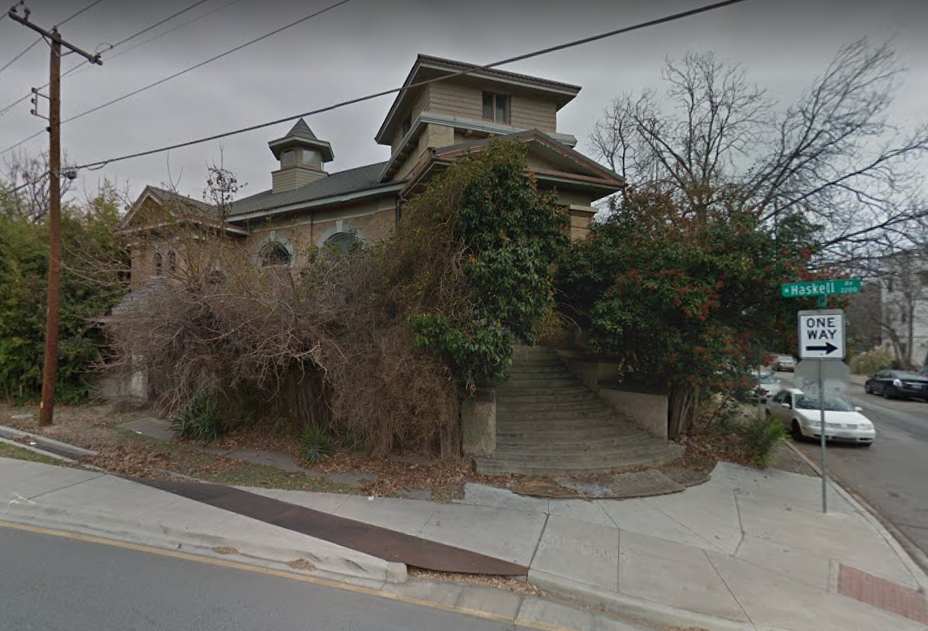
2200 N. Haskell Ave. was once known as Moon Mansion.
With its lavish parties in the 1970s and ‘80s, it’s easy to draw comparisons between Moon Mansion and the famed Studio 54 nightclub of New York City. Just read the 1981 D Magazine description:
“But as far as parties go, none can compare aesthetically with the Ashley Bellamy parties that were held in an old church called Moon Mansion. … The Star Pilgrim’s Ball of 1973 was said to have been the loveliest. When paying guests (‘we had to recoup our expenses’) came through the door, they were greeted by two actors dressed as angels who were distributing gladiolas. The party was conceived of as a play, the bulk of which was performed on a scaffold Bellamy still has inside the house. One dancer dressed as an Egyptian high priestess and others costumed as creatures from space did whirling-dervish dances for the seated guests.”
First built in 1905 as Methodist Episcopal Church, the stone structure has been a haven for artists since Bellamy returned from Europe looking for a place with high ceilings where he could paint his large-scale work, according to a 1975 D Magazine piece on the house. He rented out both studio and living spaces, creating a de facto artist commune in the transitioning neighborhood.
Long filled with residential single-family homes, the corner of Haskell and Cabell has filled up with commercial and multi-family units in recent decades. The church property at 2200 N. Haskell is zoned multifamily, but Bellamy is hoping to protect it for the future by applying for a historic overlay designation on the .39-acre plot.
If approved, the city will work with Bellamy to identify the portions of the building worth protecting, similar to the landmark process at the Lakewood Theater. Bellamy plans to continue living at the renovated church; the overlay protection will simply ensure the storied building doesn’t ever face a wrecking ball.
Historic overlays are more common across neighborhoods like Swiss Avenue, but there are a handful of homeowners who have protected just a single piece of property, like the Bromberg House.





